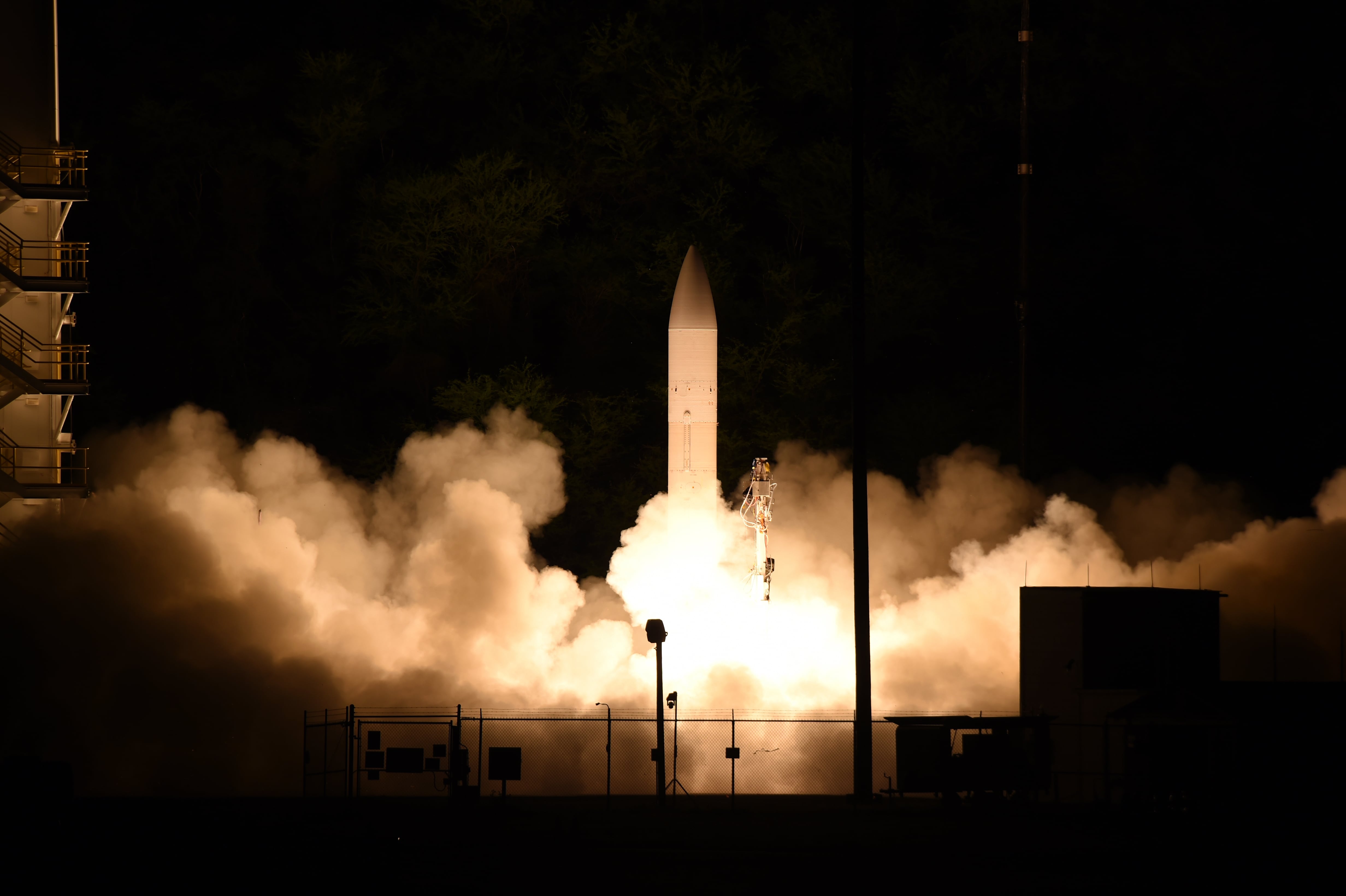WASHINGTON — Congress is giving the Missile Defense Agency the authority to research and develop laser technology to use in ballistic and hypersonic missile defense applications, according to the recently passed fiscal 2022 National Defense Authorization Act.
The secretary of defense is required to delegate to the MDA director the authority to “budget for, direct and manage directed energy programs applicable for ballistic and hypersonic missile defense mission in coordination with other directed energy efforts of the Department of Defense,” the NDAA states.
The director is tasked with prioritizing early research and development of technologies and managing the transition of technologies to industry “to support future operationally relevant capabilities,” it adds.
“I think what you’re seeing is a desire by Congress to make sure that [science and technology] and [research and development] work is no kidding translated into some missile defense relevant programs,” missile defense analyst Tom Karako of the Center for Strategic and International Studies told Defense News.
Riki Ellison, who heads the Missile Defense Advocacy Alliance, said, in a way, the provision restores funding and responsibility MDA previously had to pursue directed-energy technology programs.
MDA is “supposed to do this. They’ve done it before and at a huge magnitude with a huge budget and created a system that ... with a chemical laser shot down a missile,” Ellison said in an interview with Defense News. “Some of the optics and the technology from that effort we are still using.”
Ellison is referring to the Airborne Ballistic Laser program, which began in the 1970s and was pushed aggressively during the George W. Bush administration to address ballistic missile threats.
Cost overruns and technical challenges caused the program to ultimately be downgraded into a demonstration.
The MDA’s Airborne Laser Test Bed successfully destroyed a short-range ballistic missile in 2010. In 2012, the laser-equipped aircraft had its final take off from Edwards Air Force Base, California, and transitioned into long-term storage at Davis Monthan Air Force Base, Arizona, according to MDA.

Roughly five years ago, MDA turned its focus to laser scaling to enable a low-power laser demonstration planned for 2021 to determine the feasibility of destroying enemy missiles in the boost phase of flight. But the effort was derailed by funding cuts. The MDA’s long-term goal, at the time, was to deploy lasers on high-altitude, long-endurance, unmanned aerial vehicles to take out intercontinental ballistic missiles in the earliest phase of flight.
RELATED

In addition to giving MDA the authority to pursue directed energy programs in the FY22 NDAA, Congress also authorized an additional roughly $100 million in directed-energy research and development funding. It includes $50 million to work on improved beam control for high energy laser research and another $20 million for a short-pulse laser directed energy demonstration.
The addition of funding for directed energy and the provision granting MDA authority to pursue directed energy programs is “significant,” Patty-Jane Geller, policy analyst for nuclear deterrence and missile defense at the Heritage Foundation, said during a Dec. 16 MDAA virtual event.
“Directed energy can help us address cruise and ballistic missiles in a potentially more cost effective way than ground-based interceptors,” she said.
“I look at what’s going on in the Indo-Pacific in particular where it seems that China is exercising a bit of an offset strategy to overwhelm our ships and assets in the region with its large missile arsenal, maybe a competitive strategy to get us to spend more and more money on missile defense,” Geller said. “That’s why I think investing in directed energy and other advanced technologies is so important to strengthen our position in the spending race as well.”
While MDA has backed away from developing defensive laser weapons, the services have made some operationally relevant headway with the technology.
The Army, this year, successfully demonstrated a 50-kilowatt laser on a Stryker combat vehicle for short-range air defense and General Dynamics Land Systems is now integrating the Raytheon Technologies-developed laser technology onto four more vehicles.
The Army has indicated it plans to hold a competition for a directed-energy weapon on a Stryker vehicle beginning in FY23, which could lead to a production contract in FY24.
A Dynetics and Lockheed Martin team is slated to deliver a 300-kilowatt high-energy laser technology demonstrator for the Army’s Indirect Fires Protection Capability designed to defend fixed and semi-fixed sites against cruise missiles, unmanned aircraft systems and rockets, artillery and mortars in FY22. Four prototypes would be due at the end of FY24.
And Lockheed Martin delivered to the U.S. Air Force in October the Airborne High Energy Laser so the service can integrate it on its AC-130J Ghostrider gunship, while the U.S. Navy this month tested a laser weapon in the Middle East from its amphibious transport dock ship Portland. The laser weapon destroyed a floating target.
Jen Judson is an award-winning journalist covering land warfare for Defense News. She has also worked for Politico and Inside Defense. She holds a Master of Science degree in journalism from Boston University and a Bachelor of Arts degree from Kenyon College.








